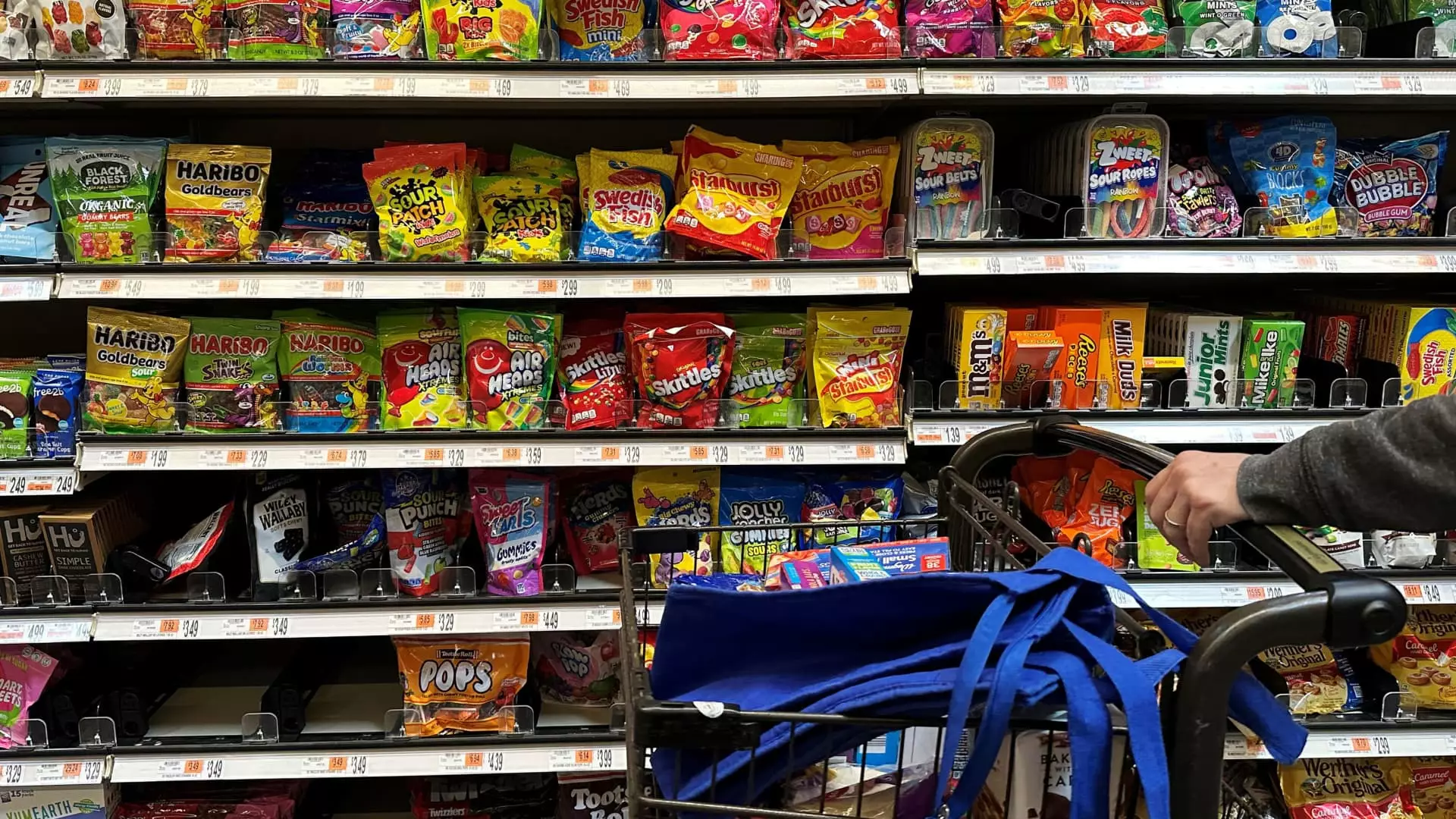The vibrant hues splashed across our favorite snacks — from the neon red of Flamin’ Hot Cheetos to the eye-catching teal of Mountain Dew Baja Blast — may soon lose their allure. In a striking decision, the Food and Drug Administration (FDA) has declared its intention to phase out petroleum-based synthetic food dyes by the end of 2024. This monumental shift not only raises eyebrows but also ignites a new debate about food safety and consumer choice. While some herald this as a progressive step towards healthier eating, others view it as an imprudent governmental overreach into personal habits and preferences.
Claiming that “for the last 50 years, American children have increasingly been living in a toxic soup of synthetic chemicals,” FDA Commissioner Marty Makary has put his foot down. His declaration sounds an alarm that echoes throughout public health circles, yet the reality is more nuanced than the Commissioner suggests. The pushback against artificial dyes has been simmering for over a decade, led by advocacy groups who argue for a cleaner food supply. But let’s be frank: can we rely solely on perceived dangers drawn from studies to impose sweeping reforms in the food industry?
Industry Resistance: The Arguments Against the Ban
Opponents to the FDA’s decision, primarily from the food and beverage sector, insist that claims surrounding artificial dyes lack concrete evidence fundamentally supporting a ban. This is a crucial point. The voices of industry leaders like PepsiCo and General Mills argue that scientific consensus is required before significant changes are made. They contend that the cry to eliminate synthetic dyes might stem from a trend rather than established fact, raising concerns that sweeping bans may inadvertently lead to economic ramifications and, paradoxically, reduced consumer choice.
Moreover, FDA’s approach leaves much to be desired in terms of enforcement clarity. Robert F. Kennedy Jr., Health Secretary and figurehead of the current administration’s health agenda, stated that there is merely an “understanding” between the agency and food corporations, not an official mandate. This ambiguity creates a breeding ground for skepticism. Will our government even have the teeth to ensure compliance? If the pharmaceuticals industry taught us anything, it’s that regulations can often lack the muscle needed for real change.
The Fiscal Implications: Price Increases on the Horizon?
While Makary asserts that phasing out petroleum-based food dyes won’t lead to increased food prices, skeptics are right to question this claim. Natural alternatives tend to be less cost-effective, often requiring larger quantities to impart the same vibrancy. The nuances here strike at the heart of economic realities. Will consumers be willing to pay more for natural dyes? The evidence suggests that if the food industry carries the additional burden of reformulation costs, prices may rise, making healthier options less accessible to lower-income families.
Let’s not forget the consumer psychology involved. The vibrant, artificial colors that have been a staple of supermarket aisles serve as visual triggers for many shoppers. If companies are forced to overhaul their recipes, how will that fundamentally alter brand perception? Will the children who grew up on the vivid colors of sugary cereals embrace a more muted palette? It’s naive to assume that aesthetics won’t influence buying behavior.
Natural Alternatives: A Solution or a Hindrance?
As the FDA encourages companies to explore natural color solutions like beet juice and turmeric, we must ponder the practicality and effectiveness of such alternatives. Just because a dye comes from a natural source doesn’t guarantee it will fit seamlessly into existing formulations or maintain consumer appeal. The episode with General Mills, which reverted to using artificial dyes after consumer backlash regarding natural alternatives that lacked visual impact, underscores this reality. The risk for corporations is significant: they may invest time and resources into reformulating products only to end up facing rejection from the very consumers they seek to please.
Companies such as McCormick, which specialize in flavor and color solutions, stand to benefit from this disruption. This points to a hybrid reality where the push for natural alternatives is indeed an avenue for some, yet a potential minefield for others. If reformulating recipes becomes the new normal, businesses must be agile, responding to market demands while navigating the regulatory landscape.
The Role of Government and Public Health
This dramatic shift forms part of a larger narrative woven into the public health discourse in America. The current administration, led by Kennedy, positions itself as the champion of a healthier future. His commitment to tackling the chronic disease epidemic is commendable, but it also invites scrutiny regarding how to define “healthy.” While the removal of synthetic dyes is a significant move, it’s essential to examine the broader context of consumer education and awareness.
Regulatory overreach should be measured against individual freedoms. Citizens deserve the right to make informed choices without paternalistic intervention. Dyes may be a piece of the puzzle, but we risk sidelining vital conversations about diet, exercise, and holistic health. As Kennedy and the FDA champion this initiative, an ardent focus on nutrition, education, and accessibility seems paramount.
The FDA’s forthcoming changes represent a turning point in the food industry that requires not just the cooperation of manufacturers but also an invested public willing to engage with the evolving landscape of health and nutrition. Is the era of vibrant artificial colors truly coming to an end, or are we simply swapping one form of manipulation for another? Only time will tell.

